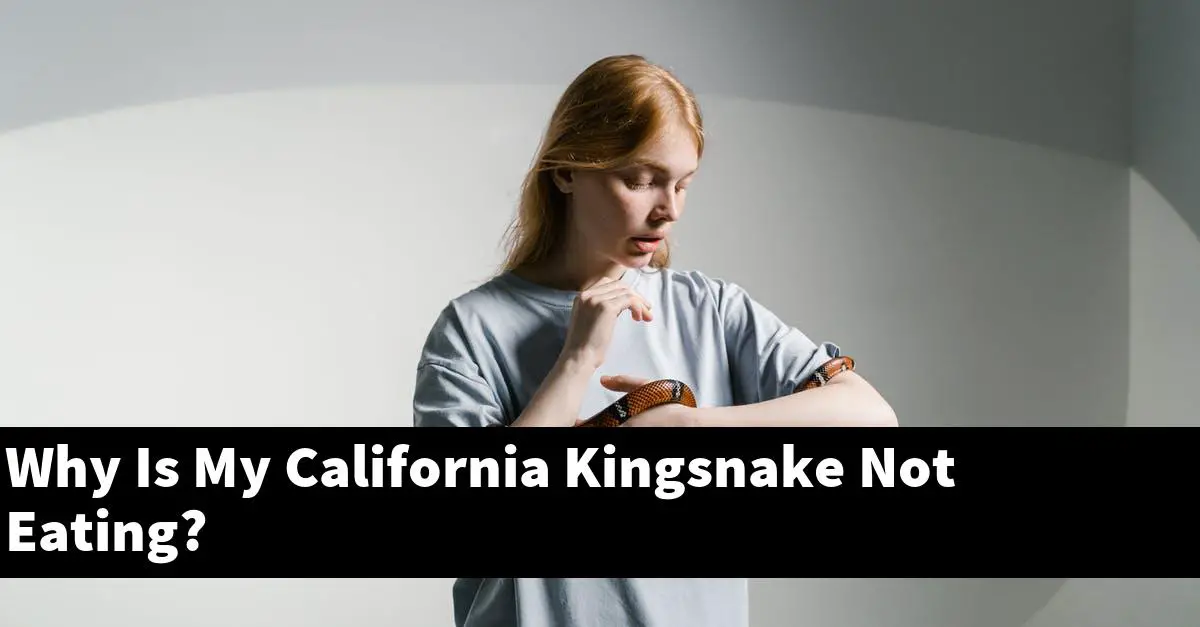There are a few reasons your California Kingsnake may not be eating. It could be due to stress from being in a new environment, it could be sick, or it could be shedding its skin. If your snake is not eating and you’re concerned, it’s best to take it to a veterinarian to check for any health issues.
This article will discuss some possible reasons why your California Kingsnake is not eating, as well as some possible solutions.
Table of Contents
What are some of the reasons why a California kingsnake might not be eating?
A California kingsnake might not be eating for a number of reasons. One possibility is that the snake is not hungry. Another possibility is that the snake is sick or injured. If the snake is sick or injured, it may not be able to digest food properly. Finally, the snake may be stressed. Stress can cause a number of problems, including a loss of appetite.
What can you do to try to get a California kingsnake to start eating again?
If your California kingsnake isn’t eating, there are a few things you can try to get them back on track.
- First, check to make sure the snake is healthy and there are no underlying medical conditions that could be causing the appetite loss.
- If everything looks good there, try offering them food items that are more appealing or easier to eat. Live prey items, for example, may encourage the snake to eat more than pre-killed or frozen food.
- You can also try offering smaller food items more often, rather than one large meal every few days.
- Lastly, make sure the snake’s habitat is set up correctly and that they have a place to hide if they feel stressed. A calm and comfortable environment will help encourage the snake to eat.
What are some of the potential consequences of a California kingsnake not eating?
A California kingsnake that does not eat can experience a number of potential consequences, including weight loss, muscle wasting, and decreased activity levels. If the kingsnake is not provided with the proper nutrition, it can also lead to organ damage and even death.
What should you do if you think your California kingsnake is not eating?
If you think your California kingsnake is not eating, the best thing to do is to take it to the vet. The vet will be able to determine if the snake is sick and needs medication, or if there is something else going on that is causing the snake to not eat.
How long can California king snakes go without eating?
A California king snake can go without eating for a period of 6 to 8 weeks. However, it is important to note that during this time, the snake will not be able to digest its food properly and may experience some weight loss.
How do I get my king snake to eat?
If your king snake isn’t eating, there are a few things you can do to encourage it to eat. First, make sure that the food you’re offering is appropriate for a king snake. Smaller snakes should be offered pinkie mice, while larger snakes can be offered adult mice or rats. The food should be no bigger around than the snake’s body.
If the food is appropriate, the next thing to consider is the temperature. King snakes are ectothermic, meaning they rely on external sources of heat to regulate their body temperature. If the temperature in the snake’s enclosure isn’t warm enough, the snake won’t be able to digest its food properly. The ideal temperature for a king snake’s enclosure is between 75 and 85 degrees Fahrenheit.
Finally, make sure that the food you’re offering is fresh. Snakes are very sensitive to the taste and smell of their food, and if the food is old or has been frozen, the snake may not be interested in eating it. If you’re not sure if the food is fresh, you can try offering live prey. Live prey will be more active and have a stronger smell, which may be more enticing to the snake.
If you’ve tried all of these things and your king snake still isn’t eating, you should take it to a reptile veterinarian for a check-up. There could be an underlying medical condition causing the snake to lose its appetite.
Summary
If your California Kingsnake is not eating, it could be due to stress, illness, or shedding its skin. If you’re concerned, take it to a vet to check for any health issues.

